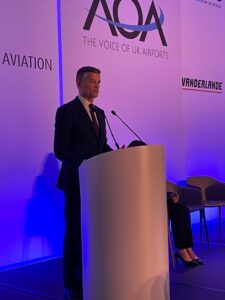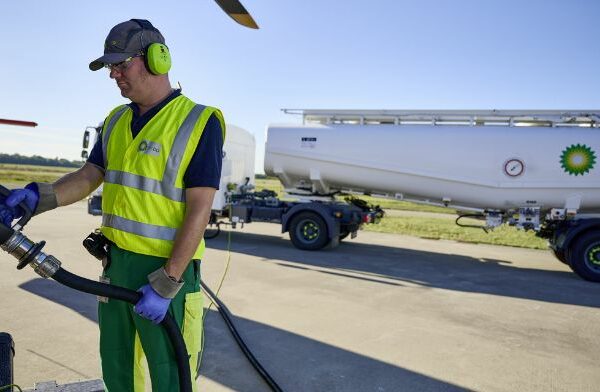


Marking the Airport Operators Association’s (AOA’s) first in-person annual conference since before the pandemic, this year’s AGM, which took place on Tuesday 31 January, was themed ‘Airports for the future’. Panel discussions focused on looking forward to a sustainable aviation future, modernised airspace and the vital role airports play in building economies and providing connectivity. There was also some reflection on the experiences of airports through COVID-19 and the road to recovery.


Describing renewed supply pressures as including downsized networks, airport slot waivers, jet fuel costs and higher air fares, he also revealed that new demand pressures include supply chain and global trade disruptions, inflation and consumer as well as business confidence.
Looking forward he highlighted that airports will have to manage more uncertainty, risks and complexity, as well as new airport economics and the prospect of smaller traffic growth.
“Airports are global businesses and the industry must keep transforming as airports transition to a new model based on the pillars of sustainability, diversity and innovation,” he said.
For some airports, including Edinburgh and London Luton, COVID-19 provided its fair share of challenges, but it also provided an opportunity to redefine their business strategy. For London Luton, CEO Alberto Martin said “as a result of COVID-19 we have adopted more of a people first approach with our airport team and are focused on achieving sustainable growth across all our operations.”
Border force challenges
Regarding innovations for Border Force, Director General Phil Douglas, said border control is in a unique space as it faces up to the challenges caused by Brexit, COVID-19, staff retention and recruitment and challenges in the non-aviation space with small boat crossings and strike action.
Despite these challenges he was delighted to confirm that in December, 95% of the travelling public crossed the border in under 30 minutes. “Our aspiration is to have the most effective border in the world by 2025 and to use digital innovations as a driver of growth,” he said.
He also highlighted the need for a standard framework across all UK ports of entry, whether they’re at sea or on land and revealed plans to trial e-gate usage for 10 to 11 year olds (it’s currently only permitted for children aged 12 and older) at UK borders.
Return of 80:20 airport slot rules


Meanwhile, the Shadow Minister for Transport, Mike Kane, said there needs to be more of a push for decarbonisation goals and called for wider collaboration (including from Government) across the aviation ecosystem in achieving this. Referencing the UK’s role in developing sustainable aviation fuels (SAF), he said “There is real innovation in this sector within the UK. SAF is key to achieving the industry’s net zero goals and there is huge potential for employment opportunities and true levelling up, particularly in regions such as South Wales and the Humber.”
Modernising airspace
One of the final sessions of the day addressed the need for airspace modernisation, with Tim Norwood, London Gatwick’s Chief Planning Officer, referencing the importance of engaging with local communities and making sure they are educated and understand the efforts, investments and benefits being made to reduce noise and carbon emissions in and around airports. “It’s important we engage at local, regional and national levels. We need to demystify the process,” he said.
Meanwhile, Richard Moriaty, the UK Civil Aviation Authority (CAA’s) CEO noted that: “There is a risk of creating an echo chamber. We need to think about airspace usage not just in the near terms, but over the next 10 or 20 years so we can create a system that can safely accommodate all future commercial models.”
Spencer Birns, Cardiff Airport’s CEO, added that one of the big challenges with airspace modernisation is cost. “Who is going to be responsible for it and who will pay?” he asked. “Airports are currently the ones meeting the cost, but it’s the airlines that are using the airspace. There is a cost burden that comes with new investment,” he continued, explaining that there are other areas that take priority for his and other smaller airports when it comes to allocating funding.”
Different models for different sized airports
As the UK airport community looks ahead on its road to recovery there are shared ambitions and a willingness to collaborate and underpin the vital role that airports play in travel, trade and global investment, however as we so often hear there is no ‘one size fits all’ model. Small and regional hubs face the same challenges as their larger counterparts, but their approach to overcoming these obstacles, their budgets, their resources and their objectives are not necessarily the same and that has to be a key factor for consideration when looking at airports of the future.






